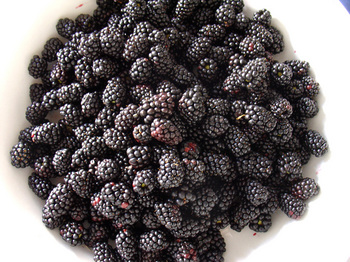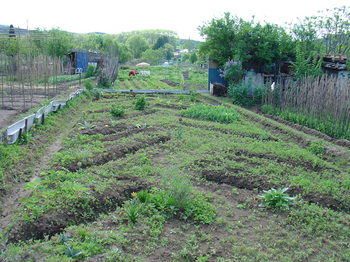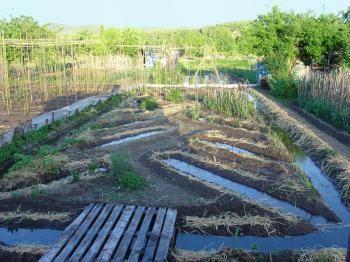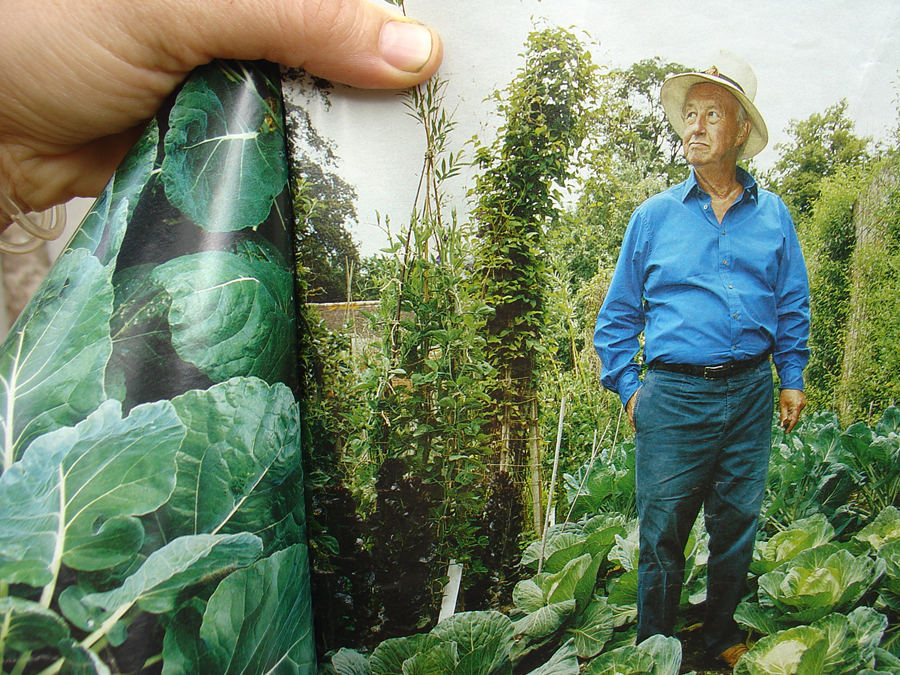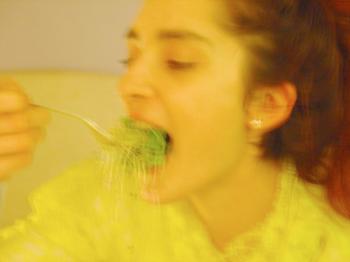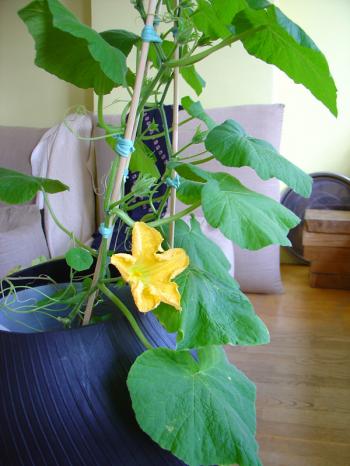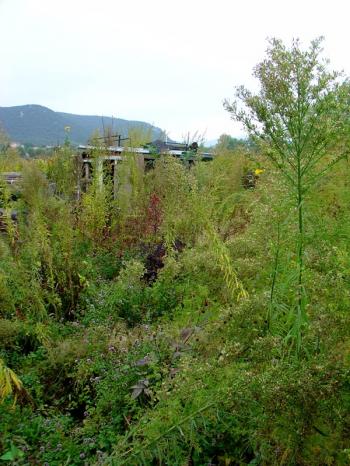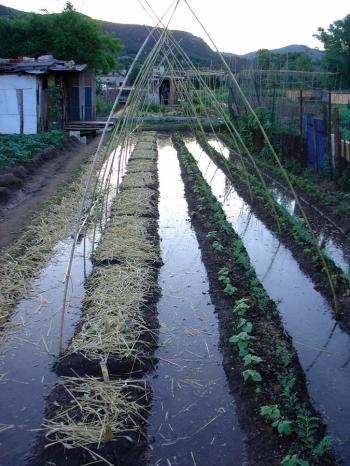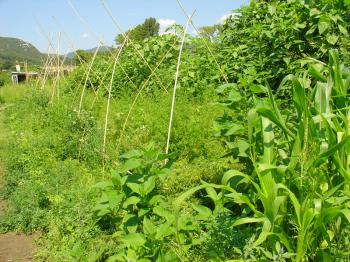Grow yer own dang biomass inadvertently
June 7, 2006
Way back in January, and then again in March, and again in April and May, I had big plans for my kitchen garden. Big and neat. Knowing that I would have to return from Occitania to the Polar Circle for gainful employment, I alphabetized my seed beds and planted sticks for beans and gourds to climb up and a rack for what I hoped would be groves of tomato plants, dripping with 4 sorts of fat tomatoes. I made a shockingly Dutch-looking irrigation system, so that when it came time to water, my neighbour Sidi ElGouche, could throw open the sluices and let er rip. And Sidi ElGouche being the sweetheart that he is, was not shy about making sure that in my absence, my kitchen garden got a goodly amount of water.
When I returned to my garden on the 14th, I encountered a solid plot of homegrown biomass.
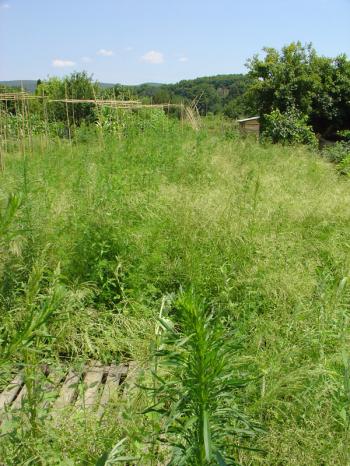
In some places it is impossible to walk, the weeds are so thick. My garden neighbours welcomed me back with a pat on the back and sarky, Bon Courage! and I’ve set to work pulling weeds. Shocking and amazing, underneath all the tangle I am finding all of my plants. It turns out that the weed layer has kept the baby plants in suspended animation after they got to be about 20 cm high.
This is all very far from being a disaster (I keep asserting to myself), and although it looks dramatic, I keep telling myself that I wanted to increase the organic material in my soil and experiment with no-till agriculture anyway. Although I’m sure the practioners of no-till agriculture, a form of farming popularised by soil scientist Masanobu Fukuoka in which seeds are cast into undergrowth and the soil is disturbed as little as possible, would be quite critical of my take on his gardening method, in the long run it will probably take me a week to give ‘my weeds’ the home-court advantage. If I had been here the entire time I would have been fussing endlessly, so maybe this method is even more efficient in the long run. I do hope in the lower garden to find a squash plant or two.
Check it (ripped and edited from the Wikipedia article on Fukuoka):
- The essence of Fukuoka’s method is to reproduce natural conditions as closely as possible. There is no plowing, as the seed germinates quite happily on the surface if the right conditions are provided. There is also considerable emphasis on maintaining diversity. A ground cover of white clover grows under the grain plants to provide nitrogen. Weeds (and Daikons) are also considered part of the ecosystem, periodically cut and allowed to lie on the surface so the nutrients they contain are returned to the soil…
The ground is always covered. As well as the clover and weeds, there is the straw from the previous crop, which is used as mulch, and each grain crop is sown before the previous one is harvested. This is done by broadcasting the seed among the standing crop. Also he re-introduced the ancient technique of seed balls (ććŁć,ćă ăă,Tsuchi Dango {Earth Dumpling}). The seed for next season’s crop is mixed with clay, compost, and manure then formed into small balls. Much less seed is used than in conventional growing, resulting in fewer but larger and stronger plants.
- Upper garden in May 2006
- Lower garden in May 2006
- Crazy covercrop experiment and failure in January 2006. What a nut!
- The principles of no-till agriculture
- The Wikipedia take on biomass
- Fukuoka Farming website
- Wikipedia on Masanobu Fukuoka
- The Plowboy interview with Masanobu Fukuoka
- Seedball blog
debra at 15:06 | | post to del.icio.us
No Comments
Sorry, the comment form is closed at this time.

